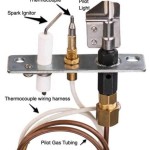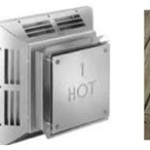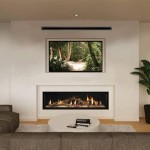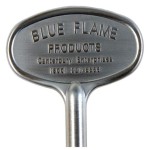Fireplace Kid Proofing: Ensuring a Safe and Warm Home
Fireplaces provide warmth and ambiance, especially during colder months. However, they also present potential hazards, particularly to young children. Fireplace kid proofing is a critical aspect of home safety, demanding careful planning and implementation. Failing to adequately protect children from fireplaces can lead to serious burns, injuries, and potentially fatal accidents. A proactive approach that combines barriers, fire safety education, and diligent supervision is essential for maintaining a safe and comfortable living environment for families with young children.
The inherent dangers associated with fireplaces stem from several factors. High surface temperatures of the fireplace itself, especially during and immediately after use, are a major concern. Open flames are an obvious ignition source for flammable materials and can easily cause burns to curious hands or feet. Additionally, the hot embers or coals remaining after the fire has died down can still pose a significant burn risk. Furthermore, the potential for carbon monoxide poisoning, stemming from incomplete combustion within the fireplace, adds another layer of complexity to the safety considerations.
Therefore, implementing comprehensive fireplace kid-proofing measures is not simply a matter of convenience but a fundamental responsibility for parents and caregivers. These measures should be designed to address each potential hazard, creating a layered defense that minimizes the risk of accidents and injuries. The strategies employed should take into account the age and developmental stage of the child, ensuring that the implemented solutions are effective in preventing access to the fireplace and mitigating the risks associated with its operation.
Establishing a Physical Barrier
The most effective way to prevent children from accessing a fireplace is to erect a physical barrier. The primary goal is to create a safe zone around the fireplace, physically preventing children from getting close enough to touch hot surfaces or interact with the fire. This barrier should be sturdy, stable, and difficult for a child to move or circumvent. Several options exist, each with its own advantages and disadvantages.
A fireplace screen is a common starting point. However, not all fireplace screens are created equal. A standard decorative screen, while aesthetically pleasing, often provides inadequate protection against curious children. Many lightweight screens can be easily pushed over or pulled away, rendering them ineffective. The ideal screen should be heavy, securely anchored to the floor or wall, and constructed of materials that do not readily conduct heat. The mesh should be fine enough to prevent small fingers from reaching through and contacting the fire or hot surfaces.
For enhanced protection, consider a fireplace guard or gate system. These systems typically consist of a series of interconnected panels that can be configured to surround the fireplace entirely. They are often made of sturdy metal and come equipped with secure locking mechanisms that prevent children from opening them. The height of the guard should be sufficient to prevent children from climbing over it. The spacing between the bars or mesh should be narrow enough to prevent a child from squeezing through. When selecting a fireplace guard or gate, ensure that it meets relevant safety standards and is designed specifically for use around fireplaces.
Another option is to construct a custom barrier using materials such as wood or metal. This can be a more labor-intensive approach but allows for greater flexibility in terms of design and integration with the existing décor. When building a custom barrier, it is crucial to use non-combustible materials in close proximity to the fireplace. The barrier should be securely attached to the wall or floor to prevent it from being easily moved or toppled. Proper ventilation should also be considered to prevent the buildup of heat behind the barrier.
Regardless of the type of barrier chosen, regular inspection is crucial. Check for any signs of damage or wear, such as loose screws, broken hinges, or weakened panels. Repair or replace any damaged components immediately to maintain the integrity of the barrier. Ensure that the locking mechanisms are functioning correctly and that children are unable to defeat them. Over time, children may become more resourceful in their attempts to access the fireplace, so it is important to stay one step ahead and regularly assess the effectiveness of the barrier.
Implementing Fire Safety Education
While physical barriers are essential for preventing access to the fireplace, fire safety education plays a vital role in reinforcing safe behavior and promoting awareness of the dangers of fire. Teaching children about the importance of fire safety should begin at an early age, using age-appropriate language and methods. The goal is to instill a healthy respect for fire and to empower children to make safe choices around fireplaces and other potential fire hazards.
Start by explaining to children that fire is hot and can cause burns. Use simple terms that they can understand, and demonstrate the concept of heat using safe examples, such as a warm stove or a hot cup of cocoa. Emphasize that they should never touch the fireplace, even when it is not in use, as the surfaces may still be hot. Reinforce the idea that fire is a tool used by adults and that children should never attempt to start or play with fire on their own.
Teach children the importance of staying away from the fireplace and maintaining a safe distance. Designate a “no-go zone” around the fireplace and clearly define the boundaries. Use visual cues, such as tape or mats, to mark the safe zone. Consistently remind children to stay outside of this zone and to respect the boundaries.
Explain the dangers of flammable materials and how they can easily catch fire. Show children examples of flammable items, such as paper, wood, and fabric, and explain that these items should never be placed near the fireplace. Emphasize the importance of keeping toys, blankets, and other flammable objects away from the fireplace at all times.
Incorporate fire safety education into everyday activities. Read books about fire safety, watch educational videos, and play interactive games that reinforce safe behavior around fire. Use role-playing scenarios to practice what to do in case of a fire. Regularly review fire safety rules and procedures with children to ensure that they understand and remember them.
Equally important is teaching children what to do in case of a fire. Explain the proper procedure for evacuating the house and emphasize the importance of having a designated meeting point outside. Practice fire drills regularly to ensure that children are familiar with the evacuation route and know what to do in an emergency. Teach children how to call for help and what information to provide to emergency responders.
Remember that fire safety education is an ongoing process. As children grow and develop, their understanding of fire safety will evolve. Continue to reinforce fire safety principles and adapt your teaching methods to their age and developmental stage. By instilling a strong foundation of fire safety knowledge, parents and caregivers can empower children to make safe choices and prevent accidents around fireplaces and other potential fire hazards.
Consistent Supervision
Even with physical barriers and comprehensive fire safety education, consistent supervision remains a crucial component of fireplace kid proofing. No barrier is completely foolproof, and no educational program can guarantee that a child will always make the safest choice. Active and vigilant supervision is necessary to ensure that children are adhering to safety rules and to intervene if they attempt to access the fireplace or engage in unsafe behavior.
Supervision should be particularly diligent when the fireplace is in use. Never leave children unattended in a room with a burning fire. Keep a close eye on their activities and be prepared to intervene if they approach the fireplace or attempt to touch it. Designate a specific adult to be responsible for supervising the children when the fireplace is in use.
Even when the fireplace is not in use, supervision is still important. Hot embers or coals can remain hot for several hours after the fire has died down, posing a burn risk to curious children. Ensure that the fireplace is completely cool before allowing children to play unsupervised in the area. Regularly check the fireplace to ensure that no smoldering embers remain.
Supervision should also extend to visitors and guests. Inform guests about the importance of keeping children away from the fireplace and ask for their cooperation in maintaining a safe environment. Be especially vigilant during parties or gatherings, when distractions may be more prevalent. Encourage guests to actively supervise their own children and to reinforce fire safety rules.
Consider using technology to enhance supervision. Baby monitors equipped with video cameras can provide a visual feed of the fireplace area, allowing parents and caregivers to monitor children's activities remotely. Motion detectors and alarms can alert adults if a child approaches the fireplace or enters the designated "no-go zone."
Effective supervision also involves creating a culture of safety within the home. Consistently enforce fire safety rules and provide positive reinforcement for safe behavior. Praise children for staying away from the fireplace and for following fire safety instructions. Correct unsafe behavior promptly and firmly, explaining the potential consequences of their actions.
Remember that supervision is not simply about preventing accidents; it is also about teaching children responsibility and promoting a sense of self-awareness. Encourage children to be aware of their surroundings and to recognize potential hazards. Empower them to make safe choices and to take responsibility for their own safety. By fostering a culture of safety, parents and caregivers can help children develop the skills and knowledge they need to stay safe around fireplaces and other potential hazards.

How To Baby Proof A Fireplace Diy Hearth Cushion Simply September

How To Baby Proof A Fireplace Diy Hearth Cushion Simply September

Baby Safety Foam Soft Seat Edge Cushion Fireplace Hearth Guard Bumper Pad Child Proof Padding Medium Gray Fits Width From 69 80 Com

61 To 72 Long Custom Hearthsoft Cushion For

Diy Baby Proofing Your Brick Fireplace Thisaveragemom

How To Baby Proof Fireplace Important Checklist

Babysafetyfoam Com Baby Proofing Fireplace Hearth Guard Bumper Pad Safety Cushion Cover Protection

How To Childproof Your Fireplace Baby Proof

How To Baby Proof Your Fireplace Reviewed

How To Baby Proof Your Fireplace Proofing Home Safety
Related Posts








